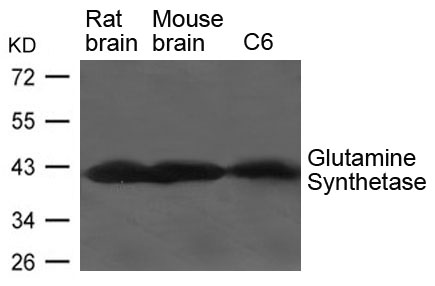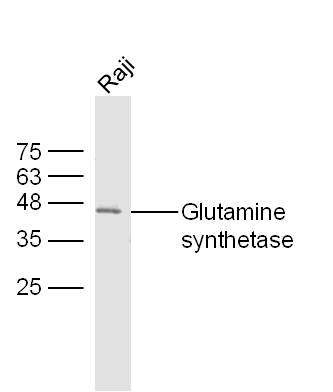Glutamine synthetase antibody [GT7711]
GTX630657
ApplicationsImmunoFluorescence, Western Blot, ImmunoCytoChemistry, ImmunoHistoChemistry, ImmunoHistoChemistry Frozen, ImmunoHistoChemistry Paraffin
Product group Antibodies
TargetGLUL
Overview
- SupplierGeneTex
- Product NameGlutamine synthetase antibody [GT7711]
- Delivery Days Customer9
- Application Supplier NoteWB: 1:500-1:3000. ICC/IF: 1:100-1:1000. IHC-Fr: 1:100-1:1000. *Optimal dilutions/concentrations should be determined by the researcher.Not tested in other applications.
- ApplicationsImmunoFluorescence, Western Blot, ImmunoCytoChemistry, ImmunoHistoChemistry, ImmunoHistoChemistry Frozen, ImmunoHistoChemistry Paraffin
- CertificationResearch Use Only
- ClonalityMonoclonal
- Clone IDGT7711
- Concentration1 mg/ml
- ConjugateUnconjugated
- Gene ID2752
- Target nameGLUL
- Target descriptionglutamate-ammonia ligase
- Target synonymsDEE116, GLNS, GS, PIG43, PIG59, glutamine synthetase, cell proliferation-inducing protein 59, glutamate decarboxylase, glutamine synthase, palmitoyltransferase GLUL, proliferation-inducing protein 43
- HostMouse
- IsotypeIgG1
- Protein IDP15104
- Protein NameGlutamine synthetase
- Scientific DescriptionGlutamine is a main source of energy and is involved in cell proliferation, inhibition of apoptosis, and cell signaling (Haberle et al., 2005 [PubMed 16267323]). Fetal glutamine requirements are very high and depend largely on active glutamine synthesis and the release of glutamine into the fetal circulation by the placenta. Glutamine synthetase (EC 6.3.1.2), also called glutamate-ammonia ligase (GLUL), is expressed throughout the body and plays an important role in controlling body pH and in removing ammonia from the circulation. The enzyme clears L-glutamate, the major neurotransmitter in the central nervous system, from neuronal synapses (see references in Clancy et al., 1996 [PubMed 8975719]).[supplied by OMIM]
- Storage Instruction-20°C or -80°C,2°C to 8°C
- UNSPSC12352203





